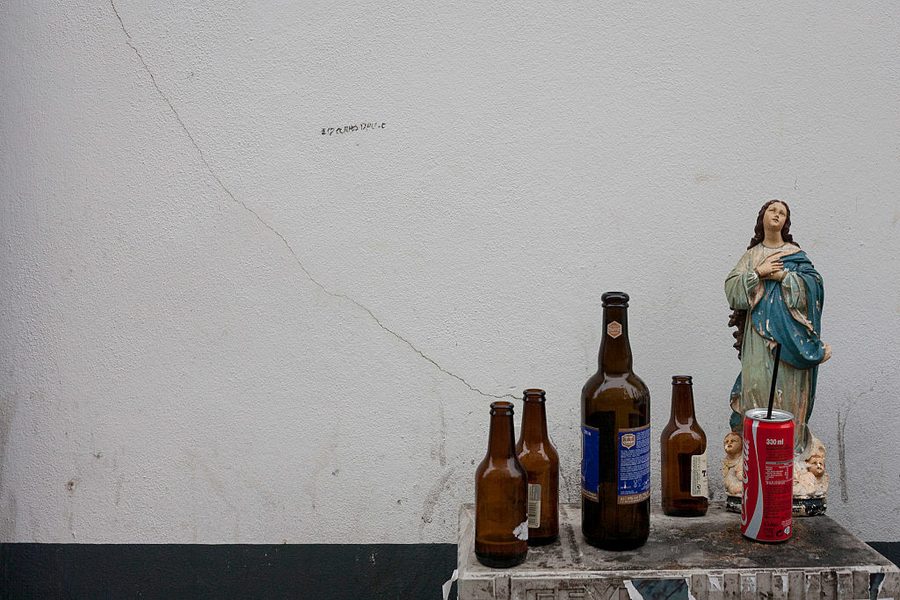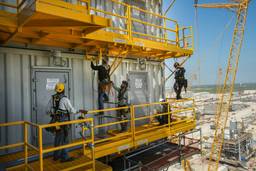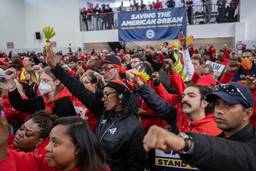
He was alone and miserable, cleaning up a strike station in Peoria, Illinois, where members of the United Auto Workers (UAW) had lived in the heat and the cold.
The UAW had just folded its standoff against Caterpillar after years of strikes and was returning to work largely on the terms the company had first laid down.
“We were losers when we came back from Vietnam,” the muscular, middle-aged worker told me nearly two decades ago. “We were losers when we put up this battle and now we’ve lost the American dream.”
Workers like him have been losing more than their American dream. They’ve been losing their lives.
In 2015, Princeton University economists Anne Case and Angus Deaton pointed out that the death rate of middle-aged white Americans had changed direction and spurted upward, reversing years of steady decline. The “turnaround” was mostly driven by the deaths of those with a high school degree or less.
Delving into questions raised by that study, the economists’ latest analysis finds that the grim reality has continued to touch working class white Americans with limited educations. And they predict that these middle-aged Americans are likely “to do much worse in old age than those currently older than 65.”
Behind the death spiral are growing rates of suicide, drug and alcohol poisoning, liver diseases and cirrhosis, the economists say. They liken the trend to the sudden emergence of an iceberg rising up out the water.
Why?
What makes these middle-aged white workers different from black or Latino workers in the United States in the same economic straits, or from workers in similarly rich nations — all of whom show declining death rates?
Indeed, as Deaton explained in a recent NPR interview, these white Americans’ death rate now exceeds the rate for black Americans “as a whole.”
“It’s as if poorly educated whites have now taken over from blacks as the lowest rung in terms of mortality rates,” he said in the interview.
Without pinpointing a specific reason, Deaton and Case suggest that the cycle of “deaths of despair” comes from the collapse of jobs and benefits for these workers who then tumble into heart-breaking problems of physical and emotional health, family difficulties, drugs and just plain survival. It is a portrait of cascading hopelessness, where workers go from stagnating wages to joblessness to dropping out of the job market.
If you’ve spent any time listening to workers’ heartbreak for the last few decades as I have, however, it is saddening to hear the shock and controversy among experts over the economists’ last two reports.
They could have heard the cries for help building.
All they needed to do was spend some time in a union hall, hang out at an unemployment office, kill an afternoon in a bar or the gloomy living room of a worker on the decline to hear the despair that fills workers’ hearts. But this is an especially American tragedy rooted in our workaday DNA.
An American dilemma because when good-paying jobs began to vanish for workers with a strong back, grit to do a tough or mindless job and little education besides high school, it’s like somebody stole their soul.
Many blue-collar workers, who once earned decent wages, thought they owned their jobs and what comes with it. But most American companies don’t agree.
Many American workers once thought that their tire factory, steel plant, paper mill or garment mill would never shut down and would be there for their children. But fate dealt a different hand for workers and their families in Akron, Gary, Youngstown and across the South, where the garment industry vanished in a huff.
Traveling to these places and more, I realized that the most lethal wound from the hollowing out of blue-collar jobs for American workers is the psychic one. Seeking out local union officials in the 1980s at places where the jobs had disappeared, I found that some had died suddenly or sunk into solemn silence. They had tried to stand tall, to help their rank and file move on, but there was little help from their union or their government and the future kept on darkening all around them.
Helping these workers hasn’t been easy because so many blame themselves and not the companies or the American way of doing business for the misfortune that suddenly enveloped them. One day I talked a young worker out of suicide. He’d failed to get back on his feet after his small auto parts plant in southern Michigan had shut down and blamed himself.
I’ve met with wives of striking workers in Decatur, Illinois, who came together to help each other because their husbands had slipped into silence or were numbing themselves with alcohol. I spent time with a grief-stricken husband, whose union was on strike, and whose wife died during a demonstration. I spoke often with a labor-friendly priest in Decatur, who was stunned by the last words a wife gave her husband. He had returned unhappily to work after a long-term lockout and had been fatally injured in a car accident. She told her dying husband that at least he would not have to go back to the job.
Not long ago, I met with a middle-aged worker in Chicago, the sole source of income for her family, who fell into a deep depression when Mondelez International said it was moving a large chunk of workers’ jobs at its Nabisco bakery to Mexico.
Soon after she was laid off, a job opened up and she was called back. But her fears about her future had already taken a powerful toll.
After hearing news of the layoffs, the woman had begun losing her hair until she was totally bald. The bakery workers union is fighting the move with a boycott of the firm’s Mexican-made products.
Unaware of her mother’s situation, her teenage daughter was stunned when she returned home from college and saw her mother. “I was scared,” she said. “I thought she had cancer.”
She didn’t have cancer. But she had, indeed, succumbed to an illness — heartbreak.
A former labor writer for the Chicago Tribune, Stephen Franklin is a Pulitzer Prize finalist and an adjunct professor at the University of Illinois Urbana-Champaign School of Labor and Employment Relations.







